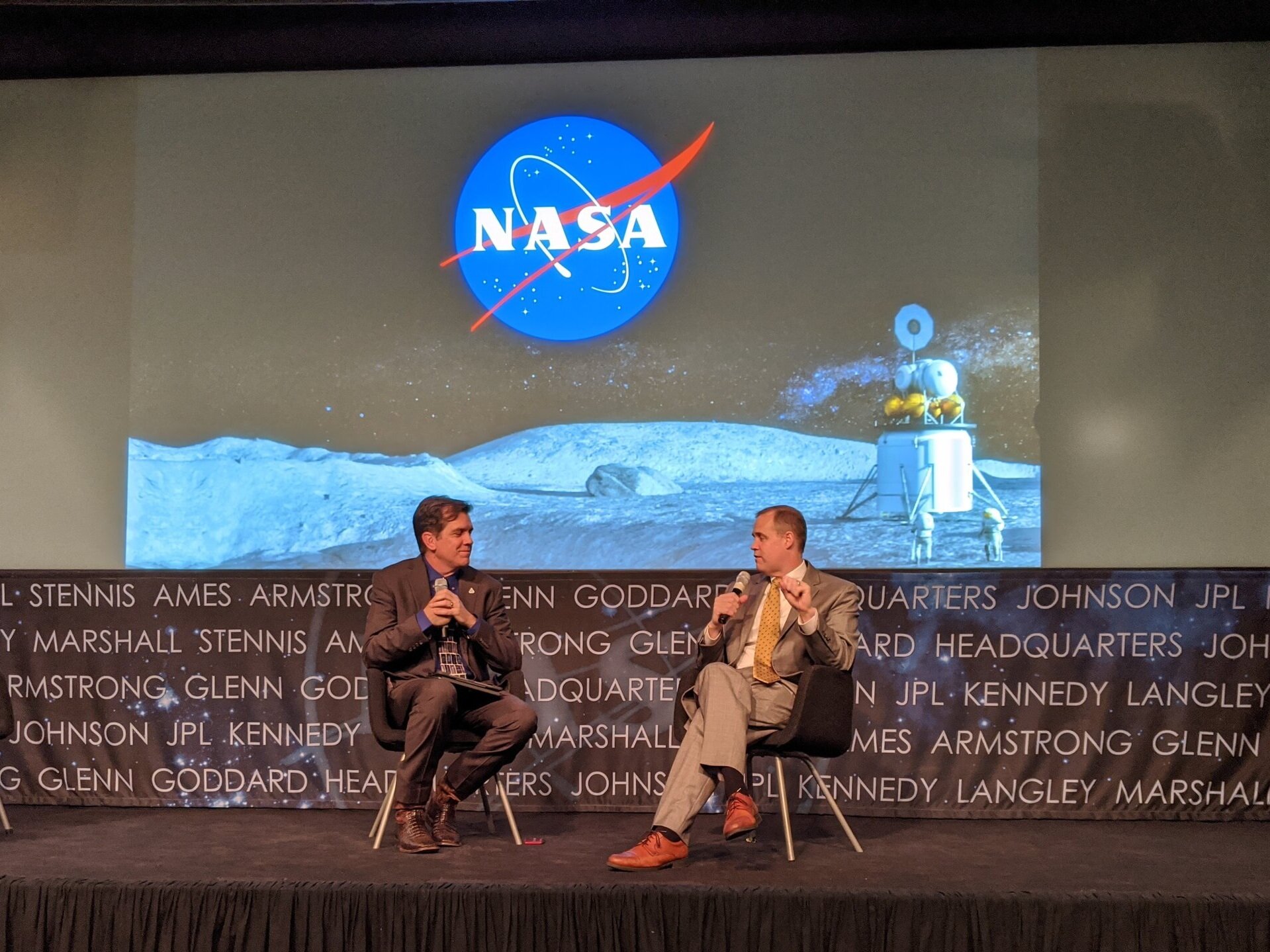Zena Cardman speaking to us about her Space Grant experience at the 2020 National Meeting.
The mission goal of NASA Space Grant is “ to expand opportunities for Americans to understand and participate in NASA's aeronautics and space projects by supporting and enhancing science and engineering education, research and public outreach efforts”. These opportunities include student fellowships, organized projects and challenges, and teaching resources, just to name a few.
I can tell you firsthand how impactful these student internships and fellowships are. I received Space Grant internship funds from New York to spend a summer at NASA Goddard. It was my senior year and I had never gotten such a prestigious internship. Space Grant focuses on giving eager, underrepresented or minority students a chance to shine when other conventional funding sources are unlikely to. Since receiving this opportunity, I made a wonderful connection to my mentor Dr. Alvin Yew. My experience made me more competitive for the NASA Space Technology Research Fellowship, which freed up my time to focus on research and brought me to NASA JPL. Those connections at JPL and my intensive research experience led to a faculty job at Hawai’i. My story mirrors that of many Space Grant recipients, like Zena Cardman, a now spaceflight ready astronaut. Space Grant literally changes lives for the better. You can view testimonial videos here.
Mike Kincaid, on the left, Jim Bridenstine, on the right, talking about the importance and impact of Space Grant in the Artemis era
I’m passionate about science literacy and accessibility so I was psyched when Luke, my boss and the Hawai’i Space Grant Director, asked me to be his deputy director. I’m only a month into this job so I haven’t done any of the hard stuff, like writing the multi-year proposal, defining the budget, or writing the close-out reports, but! I have done what I think are incredibly fun activities. Every year, we have a Space Grant meeting in Washington D.C. where we meet with our representatives and senators to advocate to keep our program funded in the federal budget.
Before our Capitol Hill visits, Mike Kincaid, Associate Administrator of NASA’s Office of STEM Engagement, and Jim Bridenstine, NASA Chief Administrator (CEO), sat down to talk to us. Jim recounted his early experience with NASA Space Grant while he was running a science museum in Oklahoma. Jim has early ties with Space Grant and is passionate about outreach and education, more so than his predecessors. This early morning fireside chat is the first time Space Grant has gotten time with a NASA chief administrator so it was kind of a big deal. NASA’s administration rotates so the agency priorities change with leadership. The foreseeable future looks bright!
Luke Flynn, Hawai’i Space Grant Director extraordinaire, posing in front of Brian Schatz’s office at my request
After this meeting, Luke and I set off to our Capitol Hill visits. We met with staffers from the office Tulsi Gabbard, Brian Schatz, and Mazie Hirono. We met with Representative Ed Case himself! Luke and Mars had created a folder for each office that included a booklet of Hawai’i Space Grant student projects and success stories, general national Space Grant information, and a memo asking the Congressperson to continue funding Space Grant at a certain dollar value. Everyone loves NASA and further, everyone loves student education and outreach, NASA Space Grant. There’s no question that Congresspeople will support us but the allocation to NASA Space Grant in the federal budget has been zero’ed out, a point of tension sorely felt at our national Space Grant meeting. At these staffer meetings, Luke wanted me to introduce myself and my vision to which I pitched the idea of a Hawai’i space empire (memorable and got laughs), accessibility and perception of building satellites, and bringing together the Native Hawai’ians and scientists. Tulsi’s representatives were the most receptive to this last point and held us over our scheduled meeting to talk about potential community organizers to get in touch with on the islands.
We then met with all 52 Space Grant Consortia members (50 states, DC, and Puerto Rico). Most every consortia’s director and program coordinators were present, along with support staff and students. The mission statement of the meeting is to talk logistics, programs, collaborations, network, and create a positive culture. The culture of these meetings is that we are family, ‘ohana. Scattered in between the informational presentations are ice breakers, space puns, and sharing of success stories. To the effect of the mission statement, we networked; we talked about potential collaborations and opportunities; we discussed lessons learned. This national meeting was one of the most loving and productive meetings I have ever been to. I am so excited to go again next year and see how all these wonderful people and programs progress, along with getting a stronger footing into the program.
P.S. What kind of music do the planets listen to?
… Nep-Tunes.



